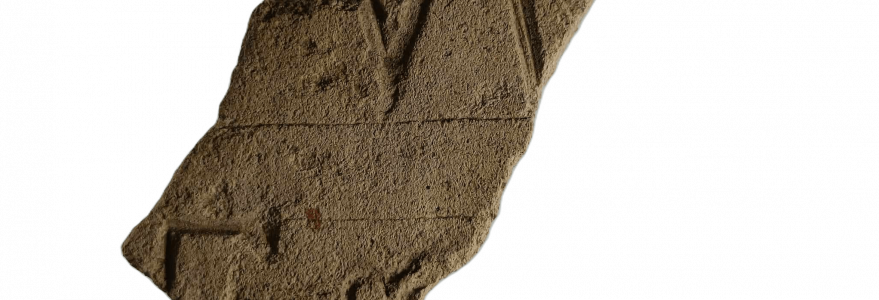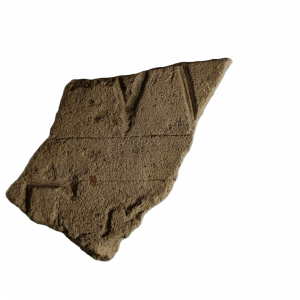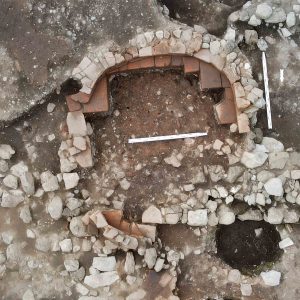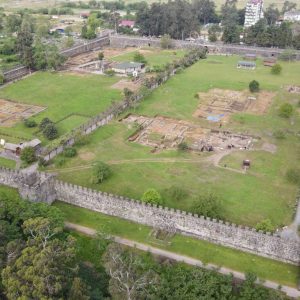A fragment of a Latin inscription, a relief with the image of Minerva, and a kiln for firing pottery. These Roman-era discoveries were made by researchers from a team led by Prof. Radosław Karasiewicz-Szczypiorski from the Polish Centre for Mediterranean Archaeology, the University of Warsaw, and Prof. Shota Mamuladze from the Gonio-Apsaros Archaeological and Architectural Site. The research was conducted in Apsaros, several kilometres south of Batumi.
The Polish-Georgian expedition conducted research at the Apsaros archaeological site for the tenth time. The former Roman fort (called “the Gonio Fortress” since Ottoman times) is located 15 km south of Batumi. One of the discoveries made there by the researchers as part of the archaeological season that ended in November is a thin stone slab with engraved fragments of two letters and a sign separating the words.
“Until now, only one inscription was known from the Roman fort of Apsaros, made of local stone of poor quality, which affected the finish and the state of preservation of the text. It can be assumed that the raw material required for official inscriptions and other intricate stonework, namely marble or good quality limestone, was brought to Apsaros from far away. Fragments of these rocks are rare at the site,” Prof. Karasiewicz-Szczypiorski says.
Gemma and kiln
Another object discovered by archaeologists is a gemma made of carnelian – a small stone that was originally a decoration for a ring worn on the finger. The intaglio relief on the gemma depicts the head of Minerva – the Roman goddess of war and a patron of soldiers.
“The object can be dated to the early 2nd century AD. The high quality of the gemma found in the Apsaros fort allows us to assume that its owner was not an ordinary soldier. Probably the precious ring adorned the finger of one of the officers, perhaps even the garrison commander,” Prof. Karasiewicz-Szczypiorski emphasises.
The researchers also discovered a pottery kiln in the central part of the fort.
“The discovered kiln was built on the ruins of the commandant’s building, probably destroyed during an earthquake after 135 AD. It may have been used for the production of wine amphorae – fragments of such a transport vessel were found inside. Of course, further research, including physico-chemical analyses, will be necessary, but it can already be assumed that there was production activity at the Apsaros fort, most probably after the partial evacuation of the army,” Prof. Karasiewicz-Szczypiorski explains.
More information about the research conducted at Gonio-Apsaros is available at the website of the UW’s Polish Centre for Mediterranean Archaeology at: https://pcma.uw.edu.pl/2017/12/13/gonio-apsaros/
The previous archaeological work at Gonio-Apsaros led by Prof. Radosław Karasiewicz-Szczypiorski, including the discovery of a wine pressing plant, was also described on the UW’s website: https://www.uw.edu.pl/odkrycia-w-gruzinskim-gonio/.







